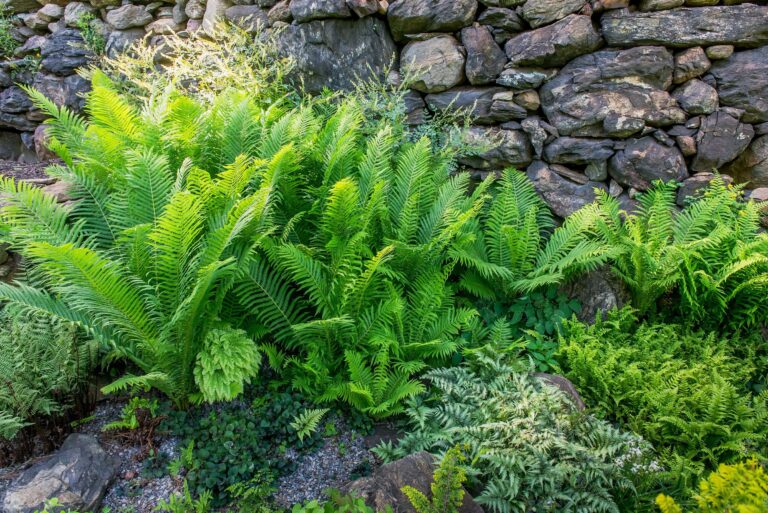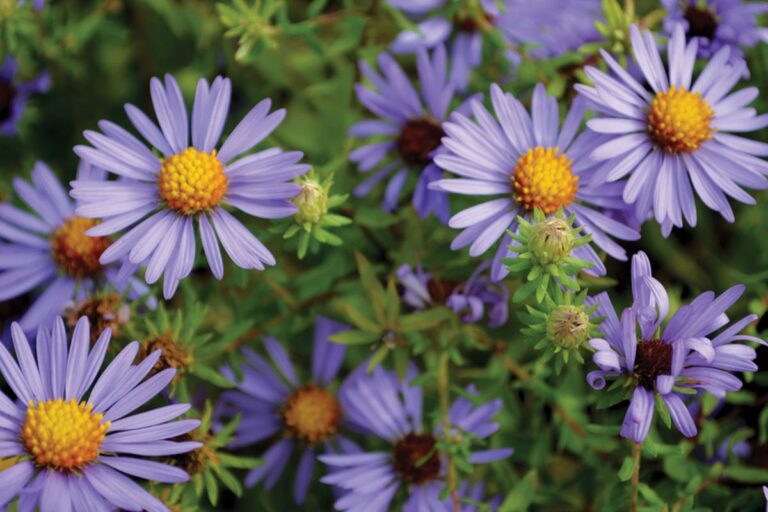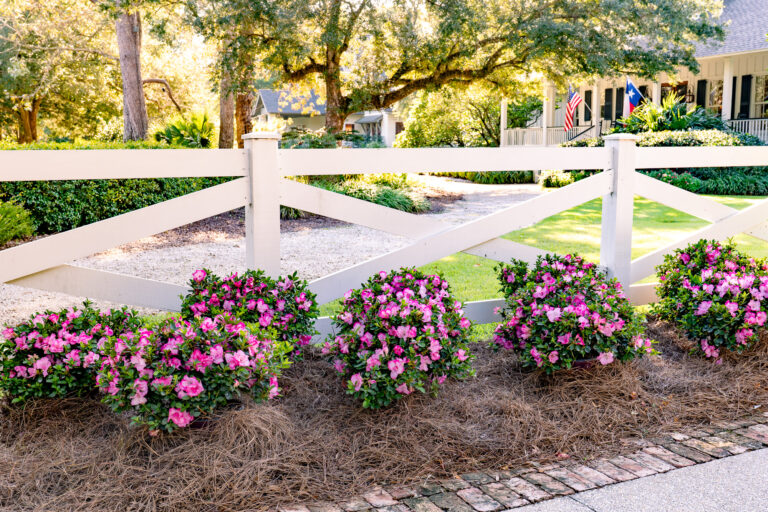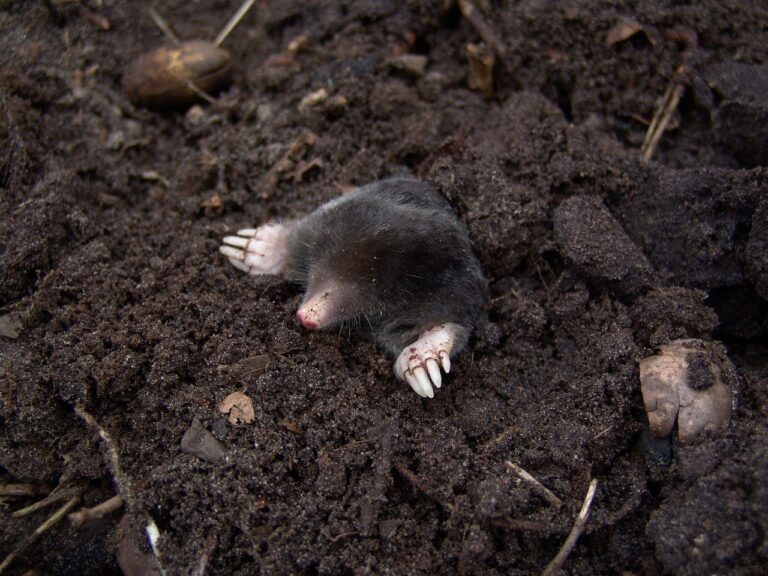10 Best Landscape Fabric Alternatives | Eco-Friendly Solutions
The market promotes landscape fabric as the best weed control method which guarantees easy garden care and perfect outdoor spaces. The product appears to be a convenient gardening solution but it conceals multiple environmental problems which affect soil health and sustainability at long term. The growing environmental problems require us to determine if landscape fabric functions properly while following sustainable gardening methods that safeguard soil health and water resources and ecosystems for upcoming generations.
The Hidden Environmental Cost of Landscape Fabric
The environmental effects of landscape fabric extend past your garden bed since they create widespread impacts throughout global ecosystems. Polypropylene serves as the primary material for most landscape fabrics because it stems from petroleum-based plastic which needs fossil fuel extraction and high-energy manufacturing operations. The manufacturing process produces major greenhouse gas emissions because plastic production creates 4.5% of annual worldwide emissions. The entire process of landscape fabric production from extraction to manufacturing and shipping and disposal generates environmental expenses which oppose the principles of sustainable gardening.
The microplastic pollution problem presents an even more concerning environmental threat. The aging process of landscape fabric under UV exposure and temperature changes and mechanical stress results in the release of small plastic fragments which contaminate soil environments. Microplastics migrate through various soil depths until they reach groundwater systems which then allow them to enter rivers before reaching the ocean. Research indicates that microplastics persist in the environment for many years until they accumulate in food sources which could result in adverse health effects for humans. The presence of contaminants in edible plant gardens poses immediate dangers to both food safety and sustainable soil health.

Soil Ecosystem Destruction: The Underground Crisis
The main disadvantage of landscape fabric is its negative effect on soil health because it generates various environmental issues which violate fundamental sustainable gardening principles. Soil contains more than just dirt because it functions as a thriving ecosystem that houses billions of microorganisms and fungi and earthworms and beneficial insects which collaborate to promote plant wellness. The natural soil ecosystem experiences disruption through landscape fabric because it establishes a physical obstruction which divides the soil from its native surroundings.
The combination of blocked sunlight and restricted air circulation and natural moisture patterns through landscape fabric creates an oxygen-free space which leads to the death of helpful microorganisms in the soil. The fabric barrier prevents earthworms from aerating soil and cycling nutrients because these worms cannot pass through it which results in their death in contaminated zones. Mycorrhizal fungi which create essential relationships with plant roots to boost nutrient and water uptake experience network breakdowns. The fabric creates a biological disaster that kills off beneficial bacteria which perform nitrogen fixation and organic matter decomposition thus creating a sterile soil environment.
The compaction issue makes these biological problems much worse. Soil organisms and organic matter incorporation enable natural soil movement which prevents the long-term compaction of soil beneath landscape fabric. The compaction process decreases pore space which restricts both water entry and root system growth. The root system of plants in compacted soil faces difficulties reaching deeper water sources during drought periods which results in increased water stress and decreased drought tolerance. Soil compaction in wet conditions results in inadequate drainage that creates waterlogged areas which become conducive to root rot and other soil-borne diseases.

The Weed Control Myth: Why Landscape Fabric Fails Long-Term
The main marketing benefit of landscape fabric does not translate into lasting weed prevention which results in ongoing maintenance work that opposes its advertised low-maintenance design. The fabric fails to solve the core problem of weed growth because it does not handle seed dispersal and soil seed banks. The fabric material will block existing weeds but it does not stop new weed seeds from reaching the surface through natural processes such as wind movement and animal activity and organic matter breakdown.
Organic waste materials build up on top of the landscape fabric to form a thin soil-like substance through natural processes. The combination of soil accumulation with mulch decomposition above the fabric creates an optimal environment for weed seed germination.
Research indicates that organic layers need two to three years to form a dense enough barrier which allows weeds to grow and becomes harder to remove.
Hard-to-remove weeds represent another significant challenge with landscape fabric. The fabric will eventually get penetrated by persistent perennial weeds that use their deep taproots and wide rhizome networks to break through. Once established, these weeds become extraordinarily difficult to eliminate because their roots intertwine with the fabric fibers. The process of weed removal through these methods leads to fabric deterioration which creates bigger holes that attract more weeds to grow. People who garden often find weeds that penetrate through landscape fabric more difficult to manage than weeds that appear in untreated sections of their garden.
The Complete Sustainable Alternatives List
The following list presents complete sustainable alternatives which provide solutions for every garden.
Cardboard: The Ultimate Zero-Cost Solution
Cardboard stands out as the most suitable replacement for landscape fabric because it delivers various advantages that extend past weed suppression. This readily available material creates an effective light barrier that prevents weed seed germination while simultaneously providing multiple soil health benefits as it decomposes naturally.
Installation Process:
- Remove all tape and staples and labels and plastic parts from the cardboard sheets
- Overlap pieces by at least 6 inches to stop weeds from growing through gaps
- Fully saturate cardboard with water to make it flexible and conform to soil contours
- Apply 3-4 inches of organic mulch for appearance and wind protection
Cardboard decomposes between 6 months and 12 months based on environmental factors and cardboard density. The material adds organic matter to the soil through this process which enhances soil structure and provides nutrients to helpful microorganisms. Cardboard functions as a short-term weed barrier while it works to improve the health of the soil in the long run. Most gardeners can obtain sufficient cardboard at no cost through local businesses and recycling centers and online marketplaces.

Newspaper: The Layered Approach to Weed Control
Newspaper offers another highly accessible alternative that provides excellent short-term weed suppression while contributing to soil health. The key to effective newspaper weed barriers lies in proper layering and material selection. The decomposition process requires 6 to 8 standard newspaper sheets as a material but users should exclude glossy inserts and magazine pages because they contain hazardous chemicals that slow down decomposition.
Layering Technique:
- Overlap sheets by several inches, similar to shingling a roof
- Thoroughly wet the material to help it conform to soil surfaces
- Apply 2-3 inches of organic mulch to hold it in place
Newspaper decomposes at a faster rate than cardboard because it decomposes entirely within 3 to 6 months under optimal environmental conditions. The fast decomposition rate of newspaper makes it suitable for annual garden beds because these beds require regular soil turnover.
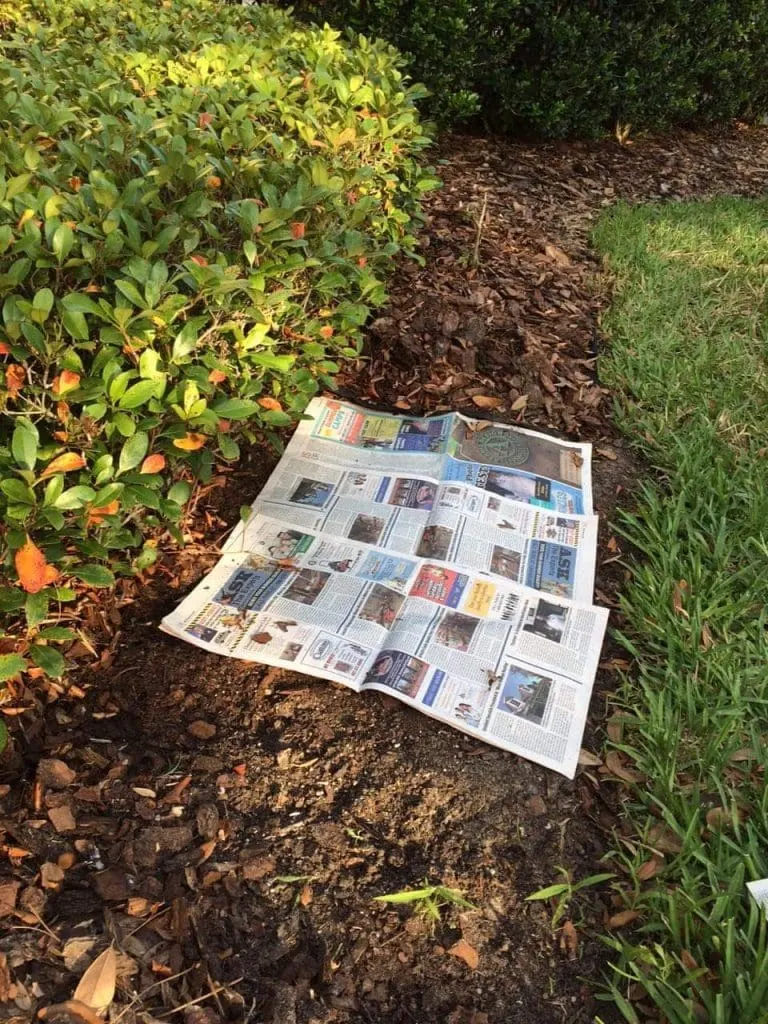
Natural Burlap: The Permeable Long-Term Solution
Burlap fabric made from natural fibers like jute or hemp provides a permeable alternative to synthetic landscape fabric, offering durability without environmental persistence. Natural burlap allows water and air to pass through while keeping weeds out which leads to superior soil health compared to synthetic materials. Burlap decomposes naturally which removes the need for long-term environmental worries.
Installation Tips:
- Select natural fiber burlap materials, avoiding synthetic blends
- Use landscape pins or biodegradable stakes to prevent shifting
- Overlap edges by 4-6 inches to stop gaps
- Apply 2-3 inches of organic mulch for UV protection
Natural burlap material will last for 2 to 3 years before it starts to decompose which will provide longer weed control than paper mulch. Burlap material allows water to pass through its fabric which prevents water accumulation and enables beneficial soil organisms to move easily through the material.
Living Mulch: Ground Cover Plants for Permanent Solutions
Ground cover plants function as the most enduring sustainable method for weed control because they develop into living mulch that enhances its effectiveness with each passing year. The plants grow at a low height to fight weeds for sunlight and water and nutrients while they help with soil protection and create wildlife habitats and improve visual appeal.
Recommended Ground Covers:
Creeping Thyme (Thymus serpyllum): The drought-resistant plant has aromatic leaves which serve as protection for plants against pests. The Mediterranean native requires full sun exposure and well-draining soil to thrive thus it works well for rock gardens and pathways and slopes. The established creeping thyme plants require only occasional trimming to maintain their shape and density.
Creeping Juniper (Juniperus horizontalis): The permanent green leaves provide continuous visual interest while preventing weeds from sprouting throughout all seasons. The native plant from North America demonstrates strong resistance to harsh conditions and needs only occasional watering after its establishment. The plant maintains slope stability through its wide root network and its thick matting blocks weed seeds from starting to grow.
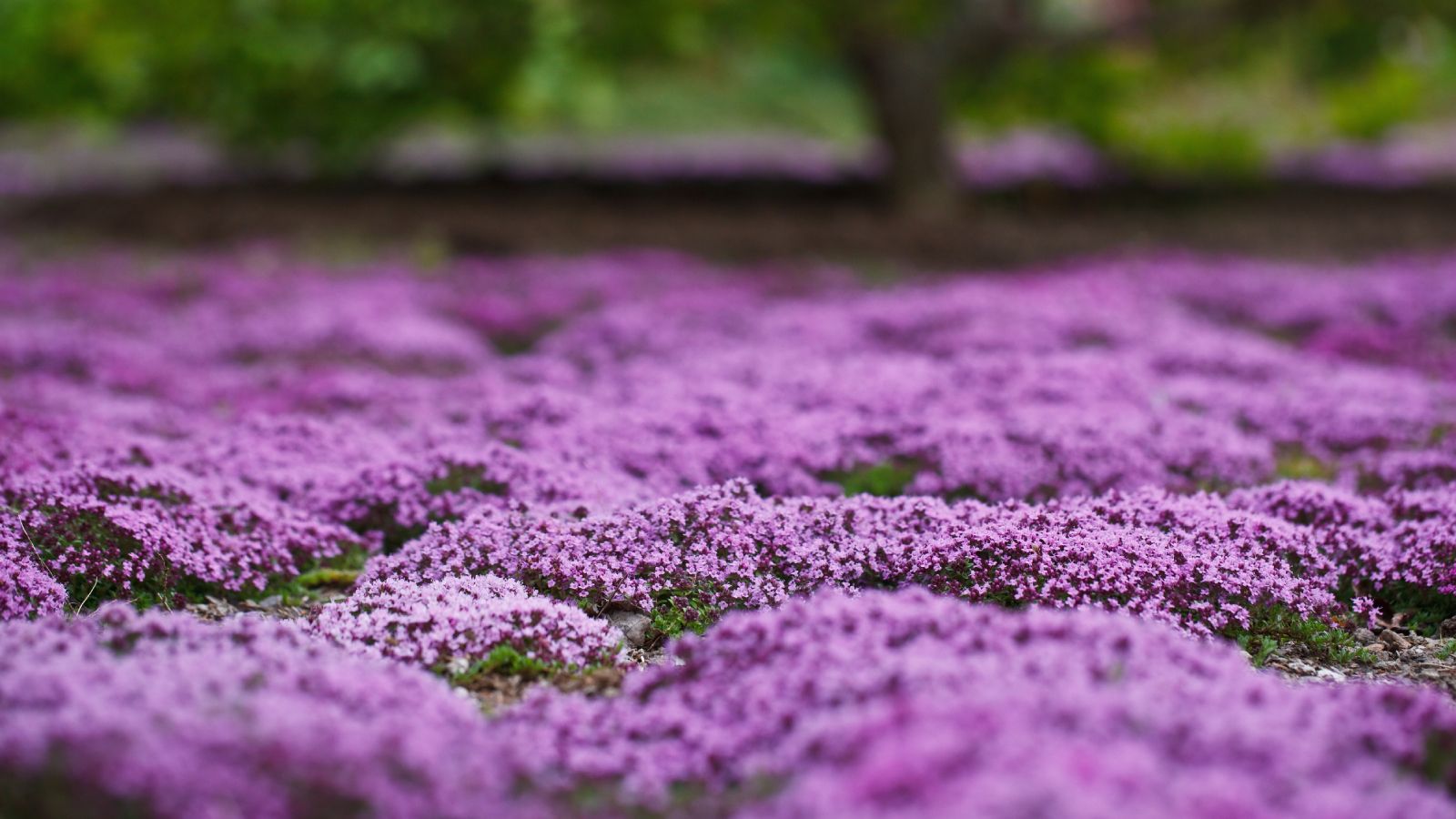
Organic Mulches: Nutrient-Rich Weed Suppression
Wood Chips function as an efficient weed barrier which breaks down into soil-enriching material as they decompose. Wood chips should be applied at a depth of 3-4 inches for weed control purposes while maintaining a 3-4 inch distance from plant trunks to avoid pest and disease problems. The carbon-rich material keeps soil nitrogen in a short-term state during decomposition which benefits woody plants but needs additional nitrogen for annual garden growth.
Bark Mulch provides the same advantages as wood chips but it breaks down at a slower rate while maintaining its visual appearance. Select bark mulches from sustainable sources, avoiding products from old-growth forests. The interlocking and stability of shredded bark exceeds that of large bark chunks.
Leaf Mold which forms from decomposed leaves serves as an outstanding material for both water retention and soil improvement. Apply leaf mold at 2-3 inches deep to control weeds effectively while using its organic matter to improve soil structure and fertility.

Implementation Strategy: Transitioning from Landscape Fabric
The process of replacing landscape fabric needs careful planning to stop weed growth and develop improved soil conditions. Start by evaluating the current state of your landscape fabric together with its age. The extent of fabric deterioration determines whether total removal becomes necessary for damaged areas but newer installations should replace sections gradually.
Complete Removal Process:
- Divide fabric into workable parts before rolling up
- Eliminate all fabric fragments to prevent microplastic release
- Cultivate soil extensively to restore natural structure
- Apply chosen alternatives immediately after removal
The chosen alternatives need to be applied right after fabric removal to stop weed growth. Soil organisms can recover better when cardboard is placed under wood chips to lengthen the time the area remains suppressed. Plant ground cover species alongside mulch applications to establish living weed suppression systems.

Cost Analysis: Economic Benefits of Sustainable Alternatives
The economic evaluation between landscape fabric and sustainable alternatives shows that green alternatives provide better long-term advantages. The initial price of landscape fabric ranges between $0.10 and $0.30 per square foot but you must add installation costs and future removal expenses. The total expenses rise significantly because each component needs to be replaced every 3-5 years because of material deterioration.
Cardboard Economics: Provides virtually free weed suppression when sourced from recycling programs or local businesses. Most retailers provide cardboard boxes for free which makes material expenses almost non-existent. The main investment requires work for preparation and installation which usually takes 2-3 hours to complete an average garden bed.
Wood Chip Costs: Range between $20 to $40 per cubic yard when bought from a supplier but tree service companies often give away chips for free to lower their disposal expenses. The 3-inch wood chip layer which covers 100 square feet of ground space delivers better soil advantages than landscape fabric at a lower cost.
Ground Cover Investment: Initial cost ranges between $3-8 per plant based on species and size but they establish permanent solutions which enhance with age. Ground covers need only occasional trimming after establishment to maintain themselves which makes them a cost-effective solution in the long run.
Maintenance Requirements: Long-Term Care Strategies
The maintenance requirements for sustainable alternatives differ from landscape fabric because these solutions focus on improving soil health rather than replacing materials. Active garden areas need annual replacement of cardboard and newspaper barriers but perennial beds that have established themselves need barrier replacement less often. Regularly check for signs of deterioration and replenish the mulch with new layers at times that match the spring planting season.
Organic Mulch Maintenance:
- Replace materials at regular intervals due to natural decomposition
- Add 1-2 inches of new material each year
- Avoid disturbing established plant root zones
Ground cover plantings need minimal maintenance once established. Water during extended dry periods for the first growing season, then allow plants to naturalize. Regular trimming of overgrown areas should be done to keep the boundaries in check and stop the plants from spreading into neighboring areas.
Regional Considerations: Climate-Specific Adaptations
The effectiveness of sustainable weed control alternatives depends heavily on the current climate conditions.
Dry Climate Strategies: Require using wood chips and compost because these materials help retain moisture while offering extra water-saving advantages. The garden should include drought-resistant ground covers such as creeping rosemary and ice plant which need only occasional watering.
Humid Climate Adaptations: The decomposition speed of organic materials increases which requires more frequent replacement of paper-based barriers. The mulch layer needs to extend 4-5 inches deep to compensate for quick decomposition and keep weeds under control. Choose ground covers that can handle humid environments since they should not be susceptible to fungal diseases.
Cold Climate Considerations: Prioritize alternatives that provide soil insulation benefits. Wood chips and bark mulch function as temperature regulators which shield plant roots from freezing and thawing cycles. The mixture of creeping juniper with ground cover plants generates winter visual appeal and prevents weed growth when plants rest during winter months.
Environmental Impact: Measuring Sustainability Benefits
Sustainable alternatives deliver multiple environmental advantages which extend past their ability to stop plastic pollution. Cardboard and newspaper recycling reduces landfill waste while providing valuable soil organic matter. The recycling of one ton of cardboard material protects 17 trees and preserves 7,000 gallons of water and 463 gallons of oil that would be needed for manufacturing new products.
Carbon Sequestration Benefits: Organic mulches serve as a carbon sequestration tool because they transform atmospheric carbon into stable organic compounds which become part of the soil structure. Soil management practices enable the sequestration of 0.4-1.2 tons of carbon per acre each year which makes sustainable gardening an effective method to fight climate change.
Biodiversity Support: Ground cover plants create habitat for beneficial insects which sustain pollinator populations that maintain food production and ecosystem health. Planting densely creates small climate zones which protect against extreme temperatures and serve as habitats for local wildlife.

The Path Forward: Your Sustainable Gardening Journey
The established action plan serves as your starting point for sustainability development. The decision to use landscape fabric for weed control reveals our dedication to environmental protection and sustainable practices which will benefit future generations. The knowledge of hidden costs from synthetic materials enables gardeners to select natural alternatives which address plastic pollution and soil degradation issues.
Begin your transition process by swapping out the landscape fabric in a single garden section with your preferred sustainable material. Monitor your garden throughout the entire growing season to track how soil health and plant strength and garden success improve. The program will expand its successful methods to new areas as participants gain more confidence and experience.
Sustainable gardening requires you to use natural systems instead of fighting against them. The implementation of landscape fabric creates artificial barriers but natural weed control methods both protect ecosystems and successfully manage weeds.
The outcome leads to gardens that develop increased resistance and productivity and environmental value with each passing year. The use of sustainable materials instead of landscape fabric results in improved garden health and environmental protection in the long run. Synthetic materials deliver temporary advantages but natural solutions establish long-lasting solutions which build up soil health and defend biodiversity while resolving environmental pollution problems. Alternative gardening practices adopted by more gardeners lead to improved environmental health and sustainable agricultural systems which benefit future generations.


